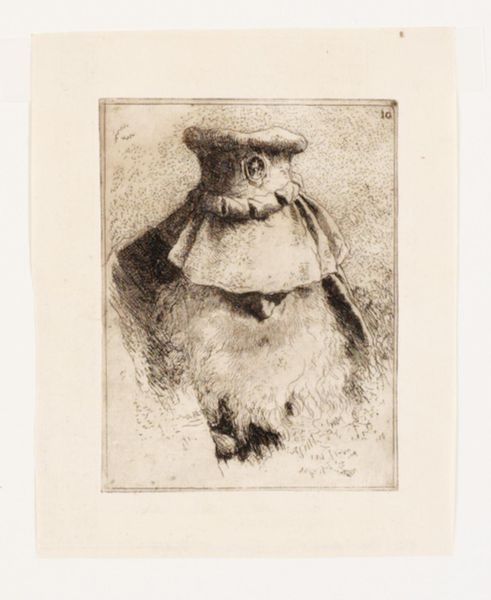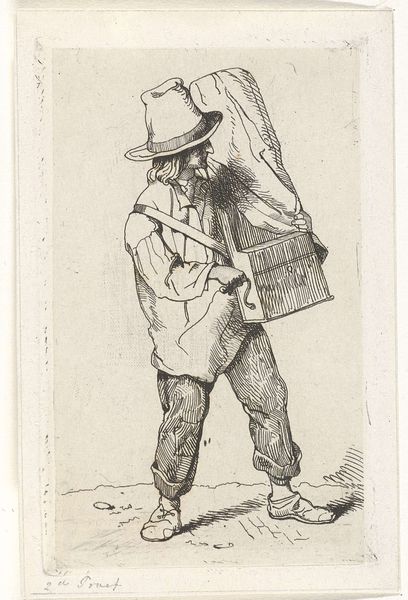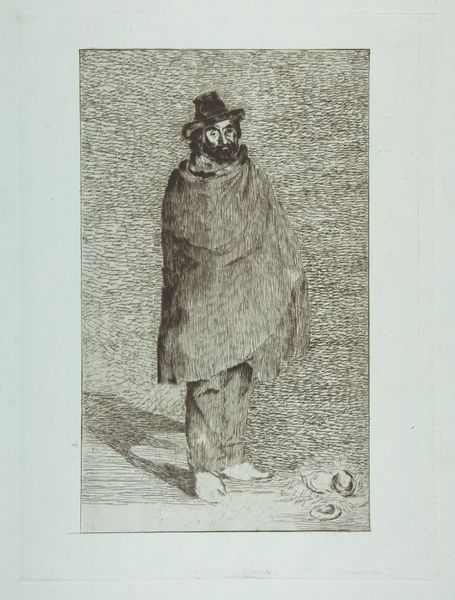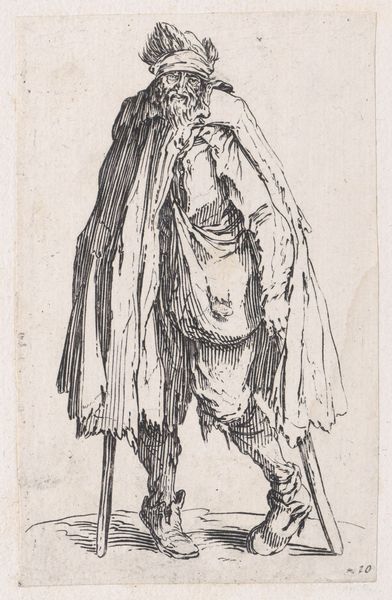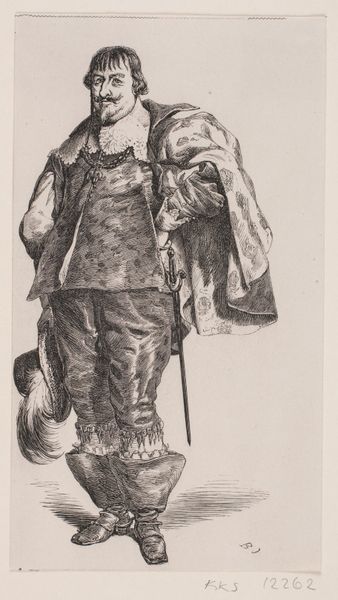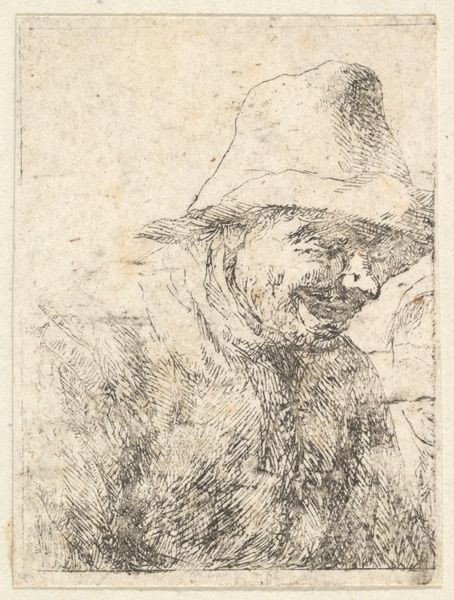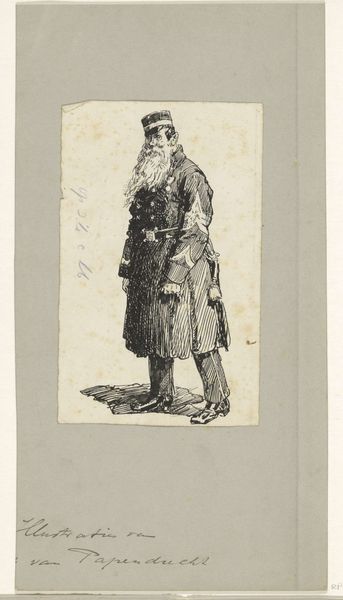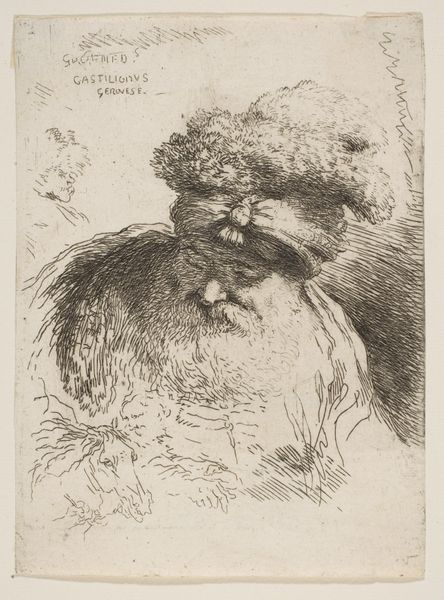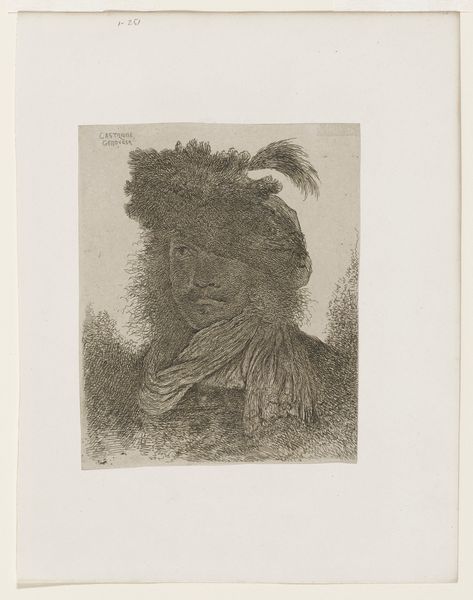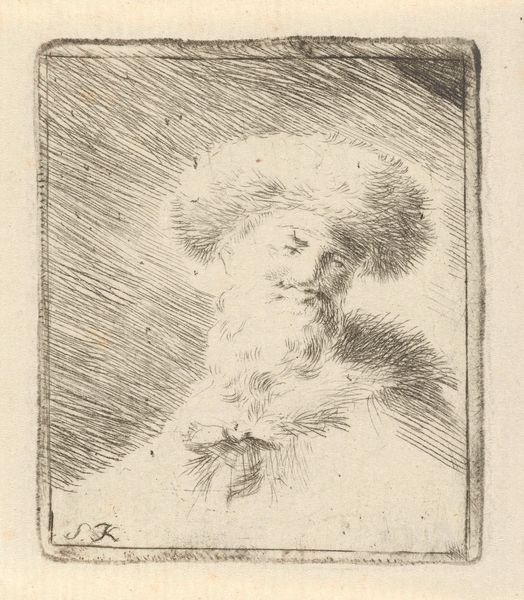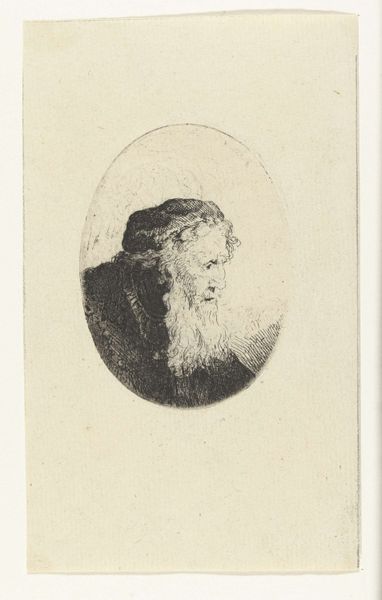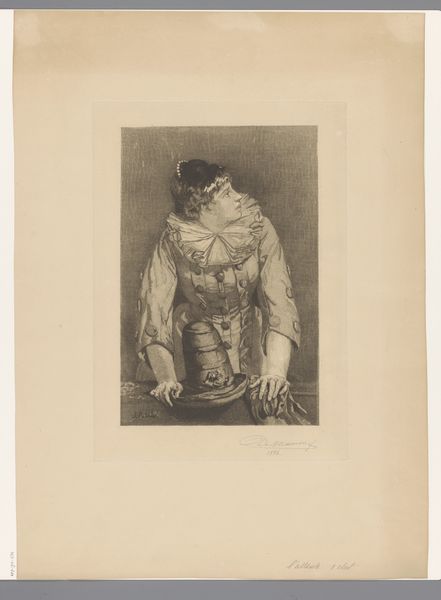
Dimensions: height 152 mm, width 115 mm
Copyright: Rijks Museum: Open Domain
Editor: This is "Man met gebogen hoofd en grote hoed," or "Man with bowed head and large hat," an etching by Giovanni Domenico Tiepolo from the late 18th century. There's something melancholic about this figure; the hat almost seems to swallow him. What do you see in this piece? Curator: It's fascinating how Tiepolo uses line and shadow to convey not just a physical likeness, but also a sense of social commentary. This bowed head, the obscuring hat – it speaks to a time of rigid hierarchies, perhaps a commentary on the burden of societal expectations and constraints. Consider the historical context. What power structures were at play in 18th-century Venice that might lead an artist to portray a man so… diminished? Editor: I hadn't thought of it in terms of social constraints. I was more focused on the individual's emotional state. Curator: And that's a valid interpretation! But can the individual be truly separated from the social? Tiepolo's choice to focus on a man largely hidden, anonymous, seems to gesture toward the lived experiences of those not in positions of power. Do you notice anything in the man's garb, or bearing that may point to certain identity markers? Editor: The hat, definitely, looks like it denotes status. But his face is hidden. The etching makes him almost like a symbol rather than an individual. Curator: Precisely! And by obscuring the individual, does Tiepolo perhaps suggest the erasure or suppression of individual identities within these societal structures? This is the baroque after all. It makes you think about gender and class… Editor: That's a really powerful reading. It changes how I see the entire composition. Curator: Art is never created in a vacuum. Examining the social, political, and economic conditions that shape an artwork allows us to see it as more than just a pretty picture.
Comments
No comments
Be the first to comment and join the conversation on the ultimate creative platform.
